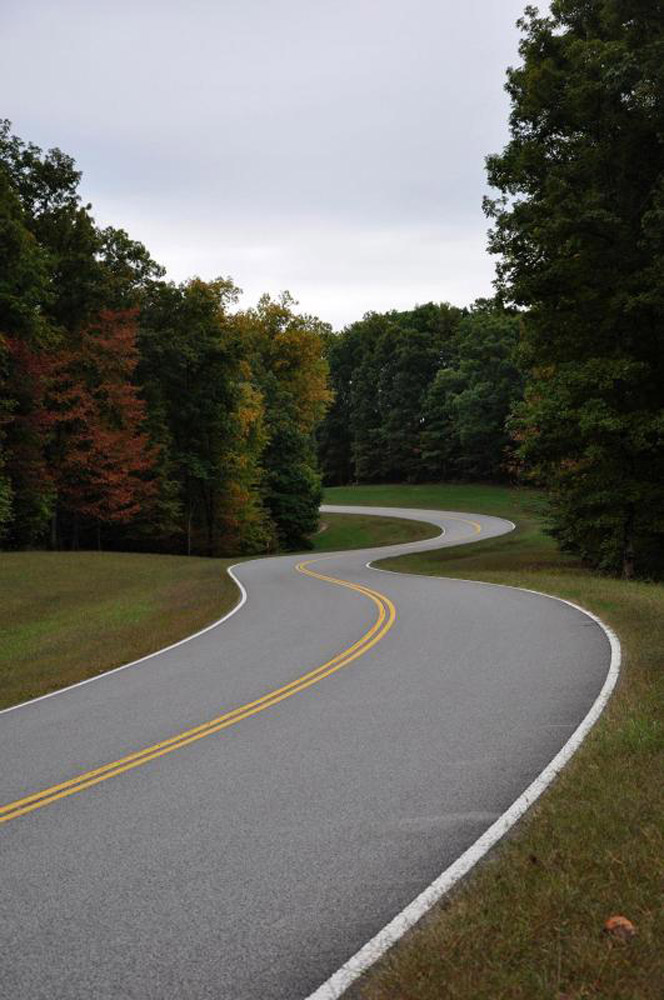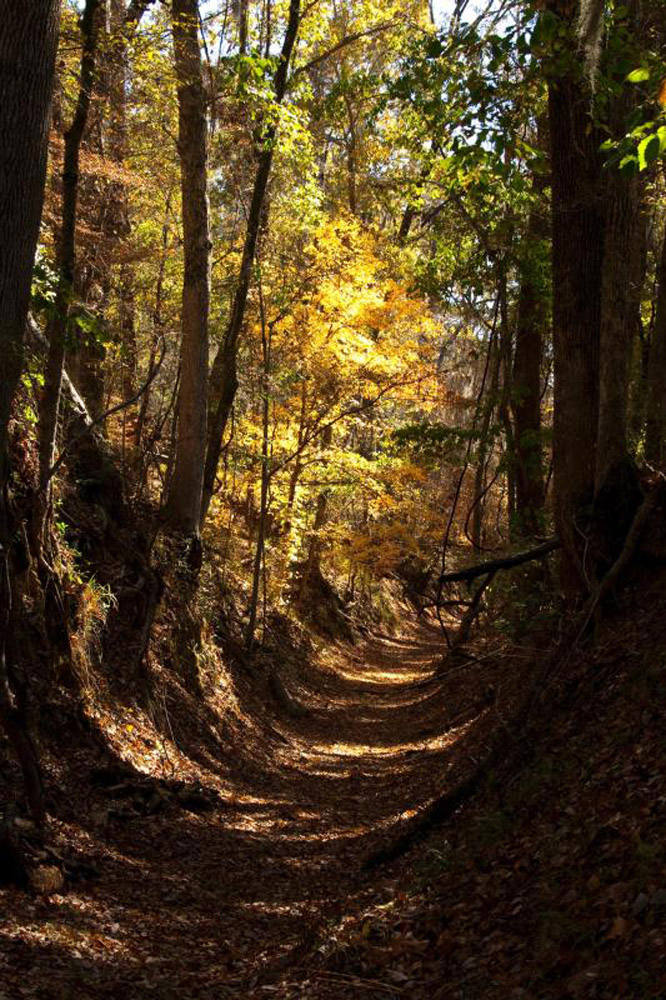When the National Park Service began work on the ultra-scenic Natchez Trace Parkway in 1934, the vision must have been akin to the idea of going to the Moon. This 440-mile ribbon of asphalt is monumental. That being said, we found a major divide between its history and beauty as opposed to the actual experience of touring the roadway.

In the early 1800s, riverboats loaded up produce on flatboats in the Midwest (at that time it was The West) to ship down the Mississippi River to New Orleans. Long before paddle-wheelers were able to ply up and down the fast-moving river, boats couldn’t go very far upriver, so the crewmen walked or rode horseback 175 miles to Natchez, Mississippi, where they joined the heavily traveled dirt path that became known as “the Trace.”

The journey took them along numerous farms and outposts, a slow climb northward to Nashville, where they could continue on the Cumberland River. Without a doubt, the road is ultra-scenic, lined with a variety of hardwood trees, rustic fences, pastures, swamps and flowers. Many of the landmarks along the way that take you back to the 19th Century are open for touring. It’s definitely worth the trip.

By now you’re wondering how I could be so praising and still call it a “major divide.” Put yourself behind the wheel or in the passenger’s seat on a two-lane ribbon of blacktop confined on all sides by trees and pastures for 100 miles, then 200 miles, then 300, and 400 and longer.
You will want to stop at some of the historic attractions, but after the first few, you’ll probably want to keep going, in an effort to get off the Trace to find a place to settle in for the night.
In retrospect, we traveled the scenic byway in May, when the trees showed off their rich green colors; however, from what we have since seen on the Park Service website, “it’s showtime” in the fall, when the hardwoods display a riot of reds, golds, purples and other fall hues. We did enjoy the delicate white blossoms of dogwoods and the rich flowers of the redbuds.
For us, always looking for adventure, we crave variety. If you’re not always eager to find out what’s over the next hill, then you’re want to experience the road the way it was designed, a historically casual tour.
On our first outing, about 75 miles along the way with two stops after Natchez, we exited, fueled up, and continued on standard Mississippi streets and byways for another 50 miles. Then we rejoined the Trace for another jaunt, and continued to interlace the trip with segments on the Trace and then off again; however, we did dry camp in beautiful state parks along the route.

Since there is so much to know about driving the Trace, rather than trying to hit the high spots or summarize the entire road in one article, you’ll do well to check out the web, where there’s a wealth of information to consult, starting with the Park Service site. It’s a good idea to look at the attractions along the way before you start in order to set your priorities on what you want to see, where to stay, where to get fuel, what is on parallel state roads, etc.
The parkway is popular with RVers, but with restrictions. Maximum length of RV and tow vehicle is 55 feet, with a height restriction is 14 feet. The parkway can accommodate an RV weighing up to 40,000 pounds. Speed limit is 50, but it slows to 40 mph for a lengthy stretch.
Natchez Trace Parkway may not qualify as “A Road Less Traveled,” although we didn’t encounter many vehicles in either direction, but its isolation fits in the category (maybe with an asterisk). A highly recommended road trip, but it’s best to know what to expect before your embark.
I welcome your comments and questions below in the Response section of this post.
From the Never-bored RVers. See you on down the road.
 About the Author: Barry Zander spent a decade as a newspaper reporter and editor, was president of an advertising/PR agency, and was in marketing before retiring in 2006. That was when Monique suggested selling their home and buying an RV to travel North America. After five years full-timing, they bought a cabin in the mountains of Southern California, the base for continuing travels. You can read more of Barry’s adventures on his blog, On Top of the World.
About the Author: Barry Zander spent a decade as a newspaper reporter and editor, was president of an advertising/PR agency, and was in marketing before retiring in 2006. That was when Monique suggested selling their home and buying an RV to travel North America. After five years full-timing, they bought a cabin in the mountains of Southern California, the base for continuing travels. You can read more of Barry’s adventures on his blog, On Top of the World.
I just completed driving the full 444 miles from Natchez to Nashville. Last year I did the southern third and came back this year to drive the whole way. I took three weeks to do it, stopping all along the way and exploring nearby areas and points of interest. It was a great trip, if not for the unprecedented heat wave across the south this fall.
Thank you for this! The Trace has always been one of my fave things. I have only traipsed the northern section. I lived in middle Tennessee, and spent lots of time in, what I call, the Sacred Trace. This April, I am taking my 1985, 22', Minnie Winnie motorhome up the whole thing. I am a bit nervous, as I will be traveling solo, with my teeny dog. ...( “Though she be but little, she is fierce!” ― William Shakespeare, A Midsummer Night's Dream, lol) I am going to do a lot of research on where to camp and get supplies/gas. I do not want "a plan". I want to be free in the "going"...as much as possible. I dont want an itinerary, per say. So, I think as long as I know every place to camp and fuel-up, I wont have to push to the next spot. (This is my goal!! Lol) Do you have a fave campground?? One that is a must-see?? I am glad I have found your site!! Thanks so much!!
We traveled the Trace earlier this year, with our 37' 5th wheel. No problems with driving it We made a bunch of stops along the way, and stayed at a couple of state parks. There are so many stops along the way, it is hard to decide where to stop. I would recommend making several trips on the Trace, if you can. This was our 7th trip on the trace, and we had specific stops we wanted to make. A new one was staying at Trace State Park outside Tupelo, MS. This was the first time we spent time in Tupelo. We found one of the best antique auto museums there, and thoroughly enjoyed it. Overnighted at the Walmart in Natchez. An excellent stop, because we were under trees, which made it cooler (didn't have to use our generator), and my wife was fascinated by the trucks that started showing up about 4 AM, delivering all sorts of products, especially food.
Love your articals
I traveled it many years ago in a small car towing a small pop-up camper, and loved it. I would NOT want to travel it now in my 28' motorhome .... too narrow and stressful.